Sexually Transmitted Infections (STIs)
- Types of STIs
- Prevention
- STIs and health
- How STIs affect sperm health
- Screening tests for women planning a pregnancy
- Rape management
- My experience
Types of STIs
Chlamydia
 | There are three main species of chlamydia causing human infection – chlamydia trachomatis, chlamydia pneumoniae and chlamydia psittacci. Chlamydial trachomatis infection is one of the most common sexually transmitted infections (STIs) in the United States, UK and Australia. |
For more information, see Chlamydia.
Gonorrhoea
 | Gonorrhoea is a disease of the epithelial lining of the urogenital tract, rectum, pharynx and conjunctivae. Gonorrhoea is a sexually transmitted infection caused by the bacterium Neisseria gonorrhoeae. It can be passed on by vaginal, oral or anal sexual intercourse. |
For more information, see Gonorrhoea.
Hepatitis B virus
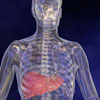 | Hepatitis B virus is a disease of the liver. Hepatitis refers to any condition causing inflammation of the liver. Hepatitis B is prevalent world-wide and has infected more than 2000 million people, with about 300 million carriers. |
For more information, see Hepatitis B Virus.
Herpes simplex virus
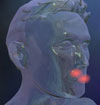 | There are two different strains of herpes simplex viruses: herpes simplex virus type 1 (HSV-1) and herpes simplex virus type 2 (HSV-2). HSV-1 is usually associated with infections of the lips, mouth, and face. HSV-2 is sexually transmitted and is usually associated with genital ulcers or sores. |
For more information, see Herpes Simplex Virus (HSV) – Cold Sores, Genital Sores/Ulcers.
HIV/AIDS
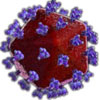 | HIV is a retrovirus that causes AIDS. HIV attacks the immune system. This system consists of cells and organs that protect the body against diseases like infections and cancer. The immune system gradually deteriorates until it reaches a point where it can no longer fight off any infection. |
For more information, see Human Immune Deficiency Virus (HIV) & Acquired Immune Deficiency Syndrome (AIDS).
Human papilloma virus (HPV)
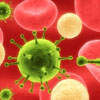 | Human papilloma virus (HPV) also known as wart virus or genital warts, is a particular type of virus that affects epithelial surfaces. HPV usually causes warts in various parts of the body including the skin of palms, soles of feet and genitals. In addition, there are some types of HPV that can predispose to cervical cancer. |
For more information, see Human Papilloma Virus (HPV).
Pelvic inflammatory disease (PID)
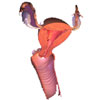 | Pelvic inflammatory disease (PID) is a term used for the generalised infection of the uterus, fallopian tubes and ovaries. Symptoms of PID can include vaginal discharge, chronic pelvic pain, and fever. Infertility or ectopic pregnancy can occur if the scar tissue left by the infection blocks the fallopian tubes. |
For more information, see Pelvic Inflammatory Disease (PID).
Syphilis
 | Syphilis is a sexually transmitted or congenital infection caused by the bacterium Treponema pallidum. Although it begins as a genital infection, it becomes a systemic disease in the second, third or fourth stage and can affect most organs of the body including the bones and joints, liver, heart and brain. |
For more information, see Syphilis.
Prevention
Protecting against STIs
 | Sexually transmitted infections (STIs) are a group of bacteria and viruses which can be, and most commonly are, transmitted through sexual contact. Preventing STIs is a vastly more effective strategy than providing treatment, both in terms of financial and health costs. Approaches to STI prevention include biomedical, behavioural and structural approaches. |
For more information, see Protecting Against Sexually Transmitted Infections
Male condoms
 | Male condoms are latex polyurethane sheaths which are put on the erect penis prior to sexual activity. They prevent pregnancy by providing a barrier to the mixing of the partners’ sexual fluids during sexual activity and play an important role in preventing the spread of STIs. |
For more information, see Male Condoms.
Female condoms
 | Female condoms are transparent, loose fitting, polyurethane sheaths with a ring on each end which is inserted into the vagina prior to sexual intercourse. They create a barrier between the woman’s vagina and her partner’s penis or mouth, which prevents the mixing of fluids during sexual activity and protect against pregnancy and spread of STIs. |
For more information, see Female Condoms.
STIs and health
How STIs affect sperm health
 | One effect of sexually transmitted infections (STIs) in men is reduced fertility. STIs affect sperm transport rather than sperm production, though the latter may be affected by certain STIs that can be difficult to detect. |
For more information, see Sexually Transmitted Infections and Sperm Health.
Screening tests for women planning a pregnancy
 | An apparently healthy woman can carry diseases which do not cause symptoms, but which can have serious consequences if left untreated during pregnancy. Screening a woman’s blood before or during pregnancy allows a doctor to identify conditions which have the potential to adversely impact on her health, or the health of her developing baby (foetus). |
For more information, see Screening Tests for Women Planning a Pregnancy.
Rape management
 | Rape is defined as any sexual act performed by a person(s) on another without consent. It may result from the use of force, the threat of force, or from the victim’s inability to give consent. It encompasses all unwanted sexual acts ranging from fondling to penetration. |
For more information, see Rape Management.
My experience
Genital herpes: Michelle learns an STI is nothing to be ashamed of
 | Michelle is a savvy Aussie woman, but when it came to STIs, she never thought she would pick one up. While it took a couple months to get over the shock, Michelle says she’s no longer embarrassed. So she wants to let others know that genital herpes is common and easily manageable. And it doesn’t mean you can never have sex again. |
For more information, see Genital Herpes: Michelle Learns an STI is Nothing To Be Ashamed Of
Pelvic inflammatory disease: Michelle deals with PID
 | Pelvic inflammatory disease is an STI which causes symptoms like stomach pains, nausea and vomiting and fever. It makes the condition hard to diagnose. Many women like Michelle, who was 31 years old when she got PID, make several trips to the doctor, not suspecting they have an STI, before getting diagnosed. |
For more information, see Pelvic Inflammatory Disease: Michelle Deals with PID
Dates
Created by:

 Login
Login














